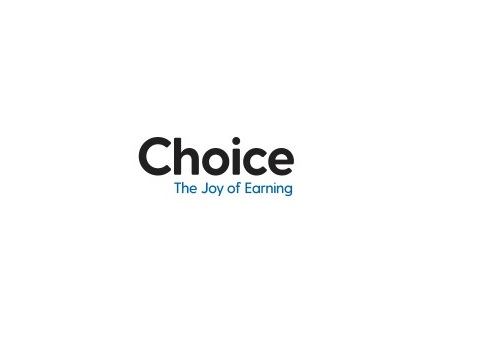TVS Supply Chain Solutions coming up with IPO to raise upto Rs 912 crore

TVS Supply Chain Solutions
- TVS Supply Chain Solutions is coming out with a 100% book building; initial public offering (IPO) of 4,62,98,759 shares of Rs 1 each in a price band Rs 187-197 per equity share.
- Not less than 75% of the issue will be allocated to Qualified Institutional Buyers (QIBs), including 5% to the mutual funds. Further, not less than 15% of the issue will be available for the non-institutional bidders and the remaining 10% for the retail investors.
- The issue will open for subscription on August 10, 2023 and will close on August 14, 2023.
- The shares will be listed on BSE as well as NSE.
- The face value of the share is Rs 1 and is priced 187 times of its face value on the lower side and 197 times on the higher side.
- Book running lead managers to the issue are JM Financial, Axis Capital, J.P.Morgan India, BNP Paribas, Nuvama Wealth Management and Equirus Capital.
- Compliance Officer for the issue is P D Krishna Prasad.
Profile of the company
The company is India’s largest and among the fastest growing integrated supply chain solutions provider among Indian listed supply chain solutions companies in terms of revenues and revenue growth, respectively, in Fiscal 2023. The company is an India based multinational company, who pioneered the development of the supply chain solutions market in India. It was promoted by the erstwhile TVS Group, one of the reputed business groups in India, and is now part of the TVS Mobility Group. For more than 16 years, it has managed large and complex supply chains across multiple industries in India and selects global markets through customized tech-enabled solutions. The company is an Indian supply chain logistics solution provider that has global capabilities and network across the valuechain with cross deployment abilities. Its technology coupled with its deep domain expertise and global expertise enables it to develop and offer customized solutions to customers’ thereby empowering agile and efficient supply chains at large scale. It provides solutions and services to meet its customers’ supply chain management and logistics requirements. For instance, it provided purchase services, assembling of component and parts, kitting, and using of packing materials for a global wind turbine company.
The company’s solutions spanning the entire value chain from sourcing to consumption can be divided into two segments: (i) integrated supply chain solutions (ISCS); and (ii) network solutions (NS). Its capabilities under the ISCS segment include sourcing and procurement, integrated transportation, logistics operation centers, in-plant logistics operations, finished goods, aftermarket fulfillment and supply chain consulting. Its capabilities under the NS segment include global forwarding solutions (GFS), which involves managing end-to-end freight forwarding and distribution across ocean, air and land, warehousing and at port storage and value added services, and time critical final mile solutions (TCFMS) which involves closed loop logistics and support including spares logistics, break-fix, refurbishment and engineering support, and courier and consignment management.
Proceed is being used for:
- Prepayment or repayment of all or a portion of certain outstanding borrowings availed by the company and its Subsidiary, TVS LI UK.
- General corporate purposes.
Industry overview
The Indian logistics market presents a large addressable opportunity, with direct spends on logistics of $216 billion in Fiscal 2020 and $180 billion in Fiscal 2021 due to the pandemic. The market has recovered to reach $205 billion in Fiscal 2022 and is expected to grow to approximately $385 billion by Fiscal 2027 at a CAGR of 13% from Fiscal 2022 to Fiscal 2027. Out of this market opportunity, the size of the outsourced supply chain solutions market (excluding e-commerce) in Fiscal 2022 was $7.5-7.7 billion, which is expected to grow at a CAGR of 20-22% to approximately $20-21 billion by Fiscal 2027. Increasing complexities in supply chain solutions is driving the trend to outsourcing logistics services to expert third parties. The direct logistics market is primarily comprised of transportation and warehousing, of which transportation accounted for 70%, or $151 billion in Fiscal 2020 and 65%, or $133 billion in Fiscal 2022. Organized players accounted for only 5.5-6% of the logistics market segments (which includes road transportation and warehousing and supply chain services only) in Fiscal 2022. Organized players are expected to grow at a CAGR of approximately 32% between Fiscal 2022 and Fiscal 2027, taking their share to 12%-15% by Fiscal 2027. This shift is expected to be driven by the ability of organized players to offer integrated services, network and scale-driven efficiencies and larger investments in technology and engineering, resulting in higher share of wallet with customers.
Supply chain is increasingly becoming complex as businesses are becoming digital and multi-party involvement is increasing, leading to growth of integrated service providers. Supply chain process starts with sourcing and purchase order management from the supplier. From here the order goes to the in-bound warehouse for raw materials. The material is then moved to the plant where there is value addition done on the product. At this stage, the work-in-progress goods are stored in the factory warehouse and then moved for processing and transporting out to end customers. The goods when finished are moved to the mother warehouse in the outbound logistics part of the supply chain. From here, the goods are transported to smaller secondary warehouses, which are closer to the end customer. Thereafter, last mile deliveries are performed to the retailer or directly the customer. This also involves freight forwarding for long distances. Reverse logistics is performed for product support, spare part fulfilment and return and break – fix support of the products. As supply chain demands become increasingly complex, more companies and sectors, particularly in India and in sectors such as retail, healthcare, telecom and technology, are expected to turn to specialist supply chain service providers that can curate more efficient and better tech enabled solutions to more efficiently manage these demands as well as increase cost savings.
Pros and strengths
Leader in end-to-end solutions enabled by domain expertise, global network and knowledge base: The company acts as a complete ‘one-stop’ solution for customers from sourcing to distribution through its end-to-end capabilities, which includes sourcing and procurement, integrated transportation, logistics operating centre, inplant logistics operations, finished goods and aftermarket fulfilment, import and export freight, closed loop logistics and support, and secondary transportation. It deeply integrates its supply chain solutions and logistics services, with digitalization and end-to-end coverage. It is able to significantly add value to its customers for their revenue and cost optimization by solving their complex problems and requirements with innovative and customized solutions and implementation at scale. The company use intelligence, automation and dynamic optimization capabilities that enables customers to achieve their supply chain objectives, increase supply chain visibility and lower total cost of operations. Its in-house tech and process knowledge base and deep domain expertise enable it to design customized bespoke solutions addressing customers’ complex requirements. With a multi-disciplinary and consultative approach, it evolves with customers by continuously learning and improving its solutions.
Robust in-house technology differentiation: With increasing technological advancements in the logistics and supply chain industry, the company follows a ‘technology-first’ supply chain solutions approach and aim at delivering innovative and responsive technology solutions in order to optimize its customers’ supply chains. It is strongly differentiated by its technology as an innovative provider of logistics solutions that enhance visibility, speed, accuracy and cost effectiveness for its customers, and by its ability to customize its technology-enabled services to cater to each customer’s requirements. Its solutioning tools for transport, warehouse, order and labour management enable it to develop customized solutions. It also utilise its deep knowledge of tech and data, and experience of catering to customers’ needs to construct robust and flexible technology services which cater to its customers’ needs. Its ‘plug and play modules’ can be easily integrated with the customers’ internal systems, including their existing enterprise resource planning systems. These can be replicated across geographies and industries for customers, enabling it to scale its services faster.
Long and Consistent Track-Record of Successful Integration of Acquisitions: The company has an established track record of successful inorganic growth through strategic acquisitions that supplement its operations. Over the years, it has made more than 20 acquisitions in the last 16 years for growth across Europe, the United Kingdom, the United States and Asia Pacific (including India). In line with its ‘C3 Framework’, it has followed a systematic approach towards acquisitions by focusing on each of the ‘Cs’ (i.e. Customer, Country and Capability) and has been able to increase its customer base, enhance capabilities and expand into newer countries.
Long-term customer relationship in diversified and attractive industries through encirclement: The company has developed partnerships with customers across diverse and high-growth industries which offer various outsourcing opportunities. The company provides services on a customer-goal based approach and its solutions are targeted towards consistently delivering higher efficiencies, higher accuracy meeting and achieving customers’ performance indicators. This approach has helped its customers meet their objectives, which has led to customer retention and development of customer relationships as well as enabled it to offer multiplicity of services. Its revenue is diversified across numerous industries and customers located across Asia-Pacific (including India), Europe and United States with different demand patterns. Its customers include numerous long-term relationships with ‘Fortune Global 500 2022’ companies, and it provided services to 72 ‘Fortune Global 500 2022’ companies in Fiscal 2023. Its customers operate in a variety of sectors including automotive, industrial, consumer, tech and tech infra, rail and utilities, and healthcare, where it has significant expertise and understand the unique supply chain requirements.
Risks and concerns
Requires significant amount of working capital: The company’s business requires a significant amount of working capital which is based on certain assumptions, and accordingly, any change of such assumptions would result in changes to its working capital requirements. Further, its working capital requirements have been increasing with the growth of its operation. While it has not faced any instances of material losses or adverse impacts on its business and operations due to failure to raise additional financing or resources, in Fiscals 2021, 2022 and 2023, there can be no assurance that it will always be able to raise resources to meet its working capital requirements on commercially acceptable terms and in a timely manner or at all in the future, which may adversely impact its business operations and future growth plans. Its working capital requirements may be subject to change due to factors beyond its control including force majeure conditions, an increase in defaults by its customers, or non-availability of funding from banks or financial institutions. Accordingly, such working capital requirements may not be indicative of the actual requirements of its Company in the future and investors are advised to not place undue reliance on such estimates of future working capital requirements.
Highly reliant on technology infrastructure and software: The company is highly dependent on in-house and third party technologies and software for a number of functions. Despite significant testing for risk management, its technology infrastructure and systems, and software suites, or those of third parties upon which it rely, are vulnerable to service interruptions or degradation or other performance problems attributable to a variety of factors, including defects, errors or malfunctions, system failures, unexpected high volume of transactions, distributed denial-of-service and other cyberattacks, infrastructure changes, human error, natural disasters, power losses, disruptions in telecommunications services, terrorist attacks, legal or regulatory takedowns, computer viruses, ransomware, malware, or other events. For instance, it faced two instances of ransomware attack in October 2021 and January 2022 in its operations in the United Kingdom, which had temporarily impacted its services and operations. In response to such instances, it rebuilt its servers and restored the applications from backups in a new data center built with more security layers as well as mandated multi-factor authentication for VPN access and office and business applications.
Derive significant portion of revenue from customers engaged in certain industries: The company derives a substantial portion of its customers from certain industries and its business growth depends to a certain extent on the continued demand for its services from customers in these industries. As a result, any loss of business from, or any significant reduction in the volume of business with, any of the customers from these industries, if not replaced, could materially and adversely affect it. A downturn in any of the industries in which its customers are engaged in, a slowdown or reversal of the trend to outsource logistics and supply chain solutions in any of these industries, or an increase in in-sourcing, could result in a decrease in the demand for its services and adversely affect its business, financial condition, results of operations and cash flows. For instance, as an outcome of the COVID-19 pandemic, the auto industry (the second largest for the Company in terms of revenue) faced a slowdown in Fiscal 2021 which in turn resulted in its revenues from automotive segment growing only by 2.24% in Fiscal 2021 compared to Fiscal 2020. These industries are sensitive to factors beyond its control, including general economic conditions such as consumer demand, consumer confidence, inflation, employment and disposable income levels, interest rate levels, demographic trends, technological changes, increasing environmental, health and safety regulations, government policies, political instability and fuel prices which may negatively affect the demand for its services.
Depend on senior management team: The company is dependent on its Promoters, senior management and other key personnel for formulating its business strategies, managing its business and developing and maintaining client relationships. Its success also depends, in part, on key customer relationships forged by members of its senior management. If it was to lose these members of its senior management, there is a possibility that some of its key customer relationships may be impacted, including its ability to renew longterm contracts. Moreover, the market for skilled employees in the supply chain solutions and logistics industries, particularly in areas of technology, solution design, data science, industrial design, and engineering, is extremely competitive and the process of hiring employees with the necessary skills requires the diversion of significant time and resources.
Outlook
TVS Supply Chain Solutions provides supply chain management services for international organizations, government departments, and large and medium-sized businesses. The ISCS segment includes sourcing and procurement, integrated transportation, logistics operation centers, in-plant logistics operations, finished goods, aftermarket fulfillment, and supply chain consulting. And, the NS segment includes global forwarding solutions (GFS), which involves managing end-to-end freight forwarding and distribution across ocean, air, and land, warehousing and at port storage and value-added services, and time-critical final mile solutions (TCFMS) which involves closed-loop logistics and support including spares logistics, break-fix, refurbishment and engineering support, and courier and consignment management. On the concern side, the company’s business is subject to various risks inherent in the supply chain solutions industry, including potential liability to its customers which could result from, among other circumstances, personal injuries or damage to property arising from accidents or incidents involving vehicles operated by it. In its operations, it may be exposed to claims from its customers arising from theft, damage or loss of the materials that it manage storage for or movement of.
The company is coming out with an IPO of 4,62,98,759 equity shares of face value of Rs 1 each. The issue has been offered in a price band of Rs 187-197 per equity share. The aggregate size of the offer is around Rs 865.78 crore to Rs 912.08 crore based on lower and upper price band respectively. On the financial front, the company’s total income increased by 10.87% from Rs 92,999.36 million in Fiscal 2022 to Rs 103,110.10 million in Fiscal 2023. The company’s restated profit for the year was Rs 417.61 million in Fiscal 2023 compared to a restated loss for the year of Rs 458.00 million in Fiscal 2022. Meanwhile, the company intends to enhance its scope of engagement with existing customers by way of providing value added solutions and bundled logistics services to them. It aims to continue to invest in technology designed to optimize labour and inventory management and also facilitate better visibility into fulfillment. The company plans to further develop its scale, global intellect and access to data and network partners in order to continue to enhance its customers’ supply chain efficiency and achieve higher efficiency in its operations throughout the whole supply chain.



















